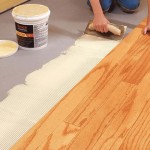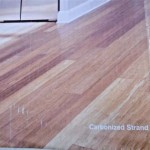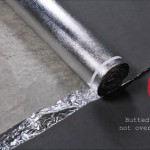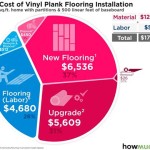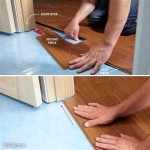How To Install Wood Flooring Over Particle Board
Installing wood flooring is a significant home improvement project that can enhance the aesthetics and value of a property. However, successful installation requires careful preparation, particularly when dealing with subfloors like particle board. While not the ideal subfloor, installing wood flooring over particle board is possible with the right techniques and considerations. This article provides a comprehensive guide on how to approach this specific installation scenario, focusing on necessary preparations, best practices, and potential challenges.
Before proceeding with any installation, it’s crucial to understand the limitations of particle board. Particle board, also known as chipboard, is manufactured from wood chips and resin, pressed into sheets. It is generally less dense and less resistant to moisture compared to plywood or OSB (oriented strand board). These characteristics make it a less desirable subfloor for wood flooring. The primary concern when installing wood flooring over particle board is moisture. Wood flooring and particle board are both susceptible to moisture damage, which can lead to warping, swelling, and ultimately, floor failure. Therefore, rigorous moisture control measures are paramount.
Assessing the Existing Particle Board Subfloor
The first critical step is a thorough assessment of the existing particle board subfloor. This assessment will determine if the particle board is suitable for wood flooring installation or if replacement is necessary. Look for signs of water damage, such as swelling, discoloration, or crumbling. Pay close attention to areas near plumbing fixtures, exterior doors, and windows, as these are common locations for leaks.
Examine the particle board for any signs of insect infestation or rot. Weak or deteriorating particle board will not provide a stable base for the wood flooring, making proper adhesion and longevity of the installation impossible. Check for loose fasteners or areas where the particle board is delaminating. If any of these issues are present, the particle board must be repaired or replaced before proceeding.
Assess the overall levelness of the subfloor using a long, straight edge and a level. Any significant dips or humps will need to be addressed to ensure a flat and even surface for the wood flooring. Minor imperfections can often be corrected with self-leveling compound or shims, but larger irregularities may require more extensive repairs.
The thickness of the particle board needs to be considered. Thicker particle board provides a more stable base, but it’s essential to ensure that the existing subfloor meets the minimum thickness requirements for the chosen wood flooring product. Consult the flooring manufacturer's specifications for recommended subfloor thickness. Generally, a minimum of 3/4 inch is recommended, but this can vary depending on the type of wood flooring being installed.
Preparing the Subfloor for Installation
Once the particle board subfloor has been assessed and deemed suitable for installation, the next step is thorough preparation. This involves cleaning, leveling, and moisture-proofing the surface. Proper preparation is essential for ensuring a successful and long-lasting flooring installation.
Begin by thoroughly cleaning the particle board subfloor. Use a vacuum cleaner to remove all dust, debris, and loose particles. Pay close attention to corners and edges. Any remaining debris can interfere with the adhesion of the flooring and create an uneven surface. After vacuuming, wipe down the subfloor with a damp cloth to remove any remaining dirt or residue. Ensure the subfloor is completely dry before proceeding.
Address any unevenness in the subfloor. Minor imperfections can often be corrected with self-leveling compound. Follow the manufacturer's instructions carefully when applying self-leveling compound. For larger dips or humps, shims can be used to create a level surface. Secure the shims to the subfloor with construction adhesive and screws. Ensure the shims are flush with the surrounding particle board to avoid creating new unevenness.
Moisture control is paramount when installing wood flooring over particle board. Apply a moisture barrier to the subfloor to prevent moisture from migrating up into the wood flooring. This can be a polyethylene film or a specialized vapor retarder. Overlap the seams by several inches and tape them securely with moisture-resistant tape. Extend the moisture barrier up the walls by a few inches and trim it after the flooring is installed. This will help prevent moisture from wicking up from the walls.
Consider installing an underlayment over the moisture barrier. An underlayment provides additional cushioning and sound insulation. It also helps to smooth out any minor imperfections in the subfloor. Choose an underlayment that is specifically designed for use with wood flooring. Follow the manufacturer's instructions for installation.
Installation Techniques and Considerations
With the subfloor properly prepared, the next step is to install the wood flooring. Select the appropriate installation method based on the type of wood flooring being used. Common methods include nail-down, glue-down, and floating installations. Each method has its advantages and disadvantages, and the best choice will depend on the specific circumstances of the installation.
For nail-down installations, use a flooring nailer specifically designed for wood flooring. Ensure that the nails are driven at the correct angle and depth to avoid damaging the flooring or the subfloor. It is generally recommended to use shorter nails than you would with a plywood subfloor due to the particle board’s lower density. Consult the flooring manufacturer's recommendations for nail size and spacing.
Glue-down installations require a high-quality flooring adhesive. Apply the adhesive evenly to the subfloor using a notched trowel. Ensure that the adhesive is spread thickly enough to provide adequate bonding, but not so thickly that it oozes up between the flooring planks. Follow the adhesive manufacturer's instructions for application and curing time.
Floating installations are often the simplest option, especially for click-lock flooring systems. This method involves assembling the flooring planks without attaching them directly to the subfloor. A floating floor relies on the weight of the flooring and the friction between the planks to hold it in place. Ensure there is an expansion gap around the perimeter of the room to allow for movement of the flooring due to changes in temperature and humidity. Cover the expansion gap with baseboards or quarter-round molding.
Regardless of the installation method, acclimate the wood flooring to the environment of the room for several days before installation. This allows the flooring to adjust to the temperature and humidity conditions, minimizing the risk of expansion or contraction after installation. Store the flooring in the room where it will be installed, and follow the flooring manufacturer's recommendations for acclimation time.
When cutting wood flooring, use a saw designed for fine cuts to minimize splintering. Also, consider using a tapping block to ensure tight seams between planks, preventing gaps and ensuring a professional finish. Regularly check the levelness of the installed flooring to ensure that it is even and consistent. Make adjustments as needed to maintain a flat and even surface.
Remember to use appropriate safety gear during the installation process, including eye protection, ear protection, and a dust mask. Work in a well-ventilated area to avoid inhaling dust or fumes from adhesives or sealants. Dispose of waste materials properly, following local regulations. A successful wood flooring installation over particle board requires careful planning, meticulous preparation, and attention to detail. By following these guidelines, homeowners can achieve a beautiful and durable floor that will enhance the value and enjoyment of their home.
Following these methods and considerations will significantly increase the chances of a successful and long-lasting flooring installation over particle board. Ignoring these steps can lead to costly repairs and premature flooring failure.

Solid Hardwood Flooring Installation Method Over Particleboard

Installing Wood Subfloors Over Concrete Hardwood Floors

Installing Wood Flooring Over Concrete Diy

How To Install Lock Engineered Hardwood Flooring

Replacing Water Damaged Particle Board Floors With Laminate Flooring

Installing The Wide Plank White Oak Flooring I Made Matt Cremona

How To Tearout Particle Board Before Install Of Wood Floor

Real Wood Floors Made From Plywood

How To Install Wood Flooring Diy Made Easy Esb

Inexpensive Wood Floor That Looks Like A Million Dollars
Related Posts

